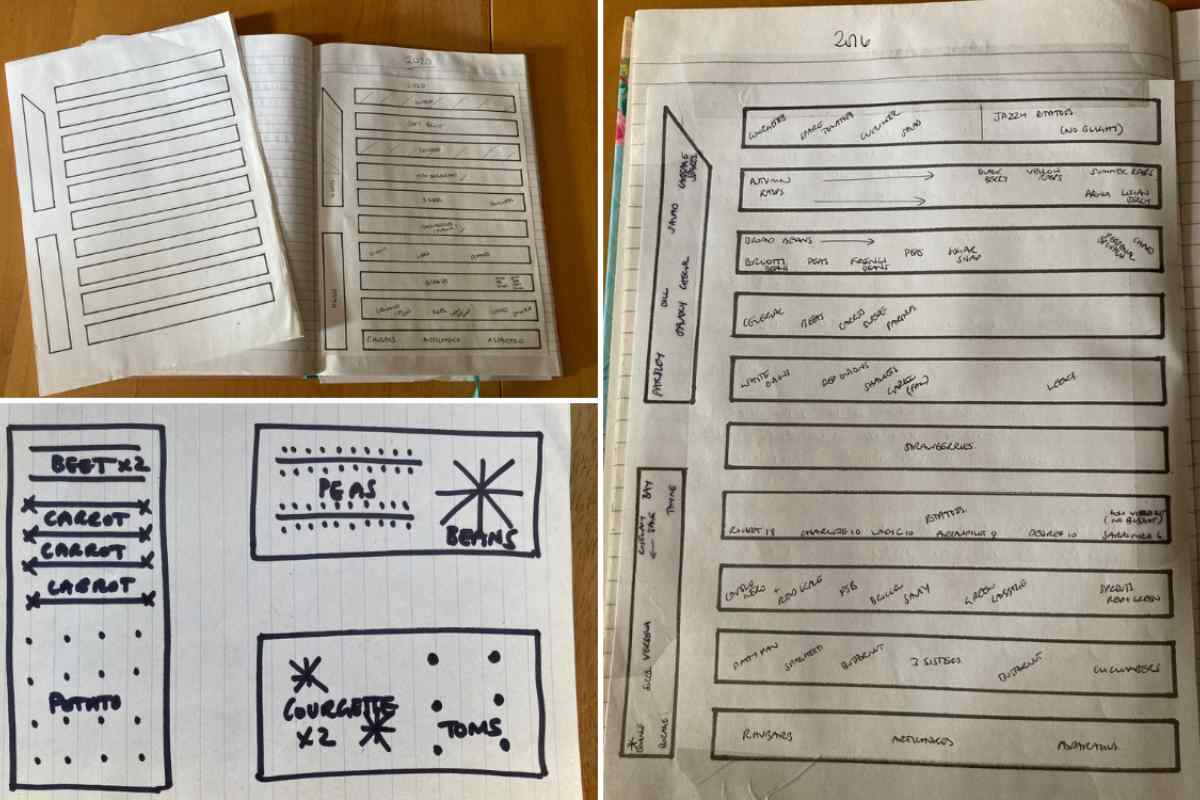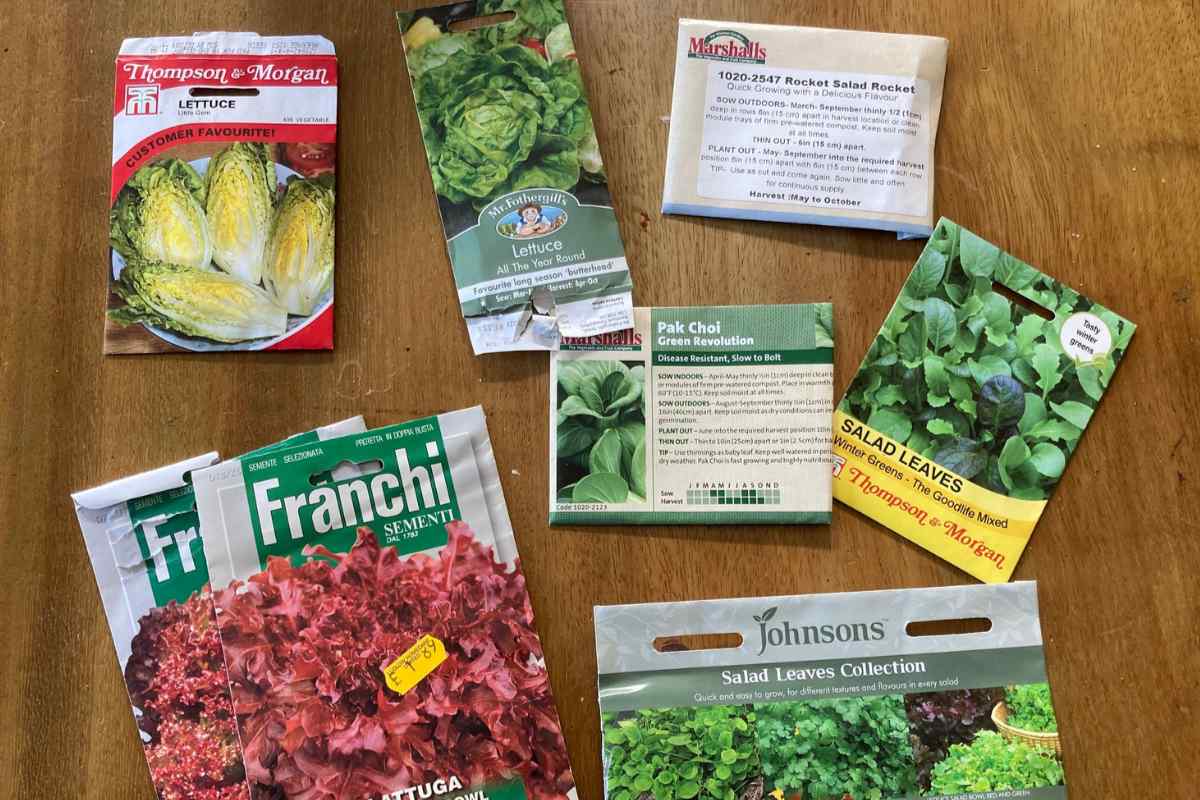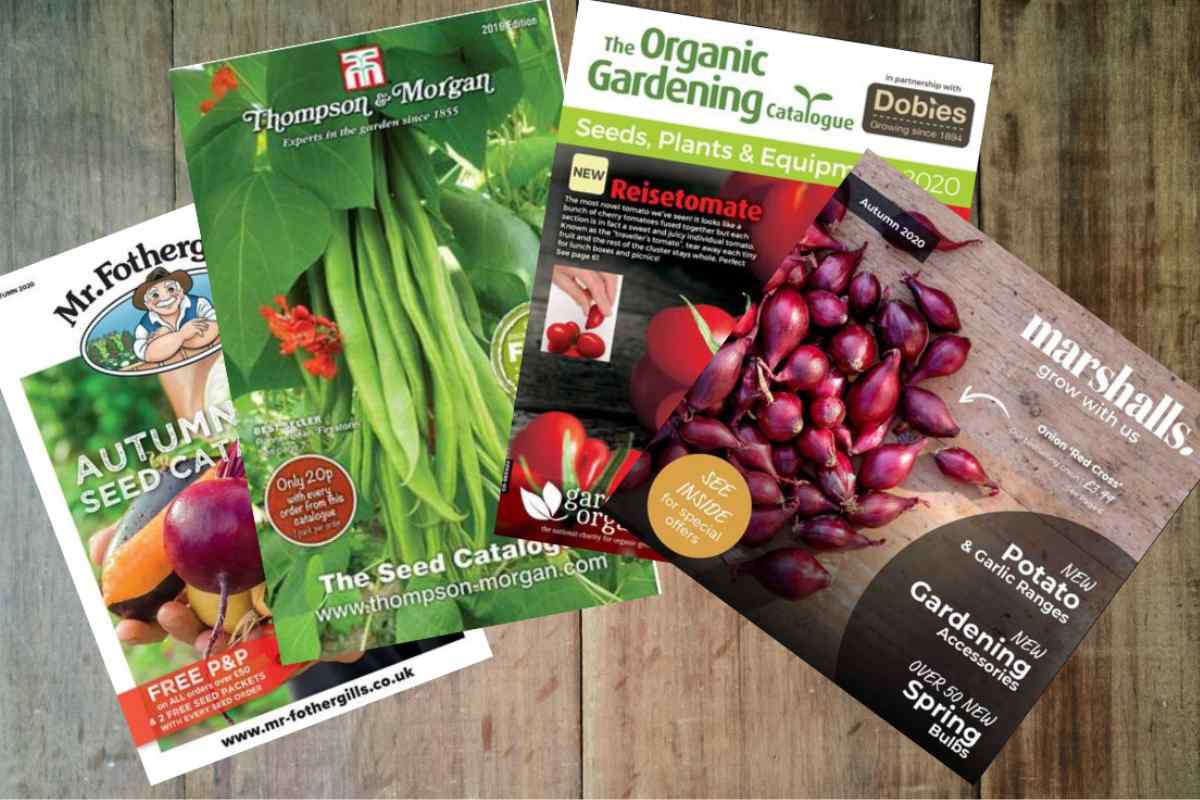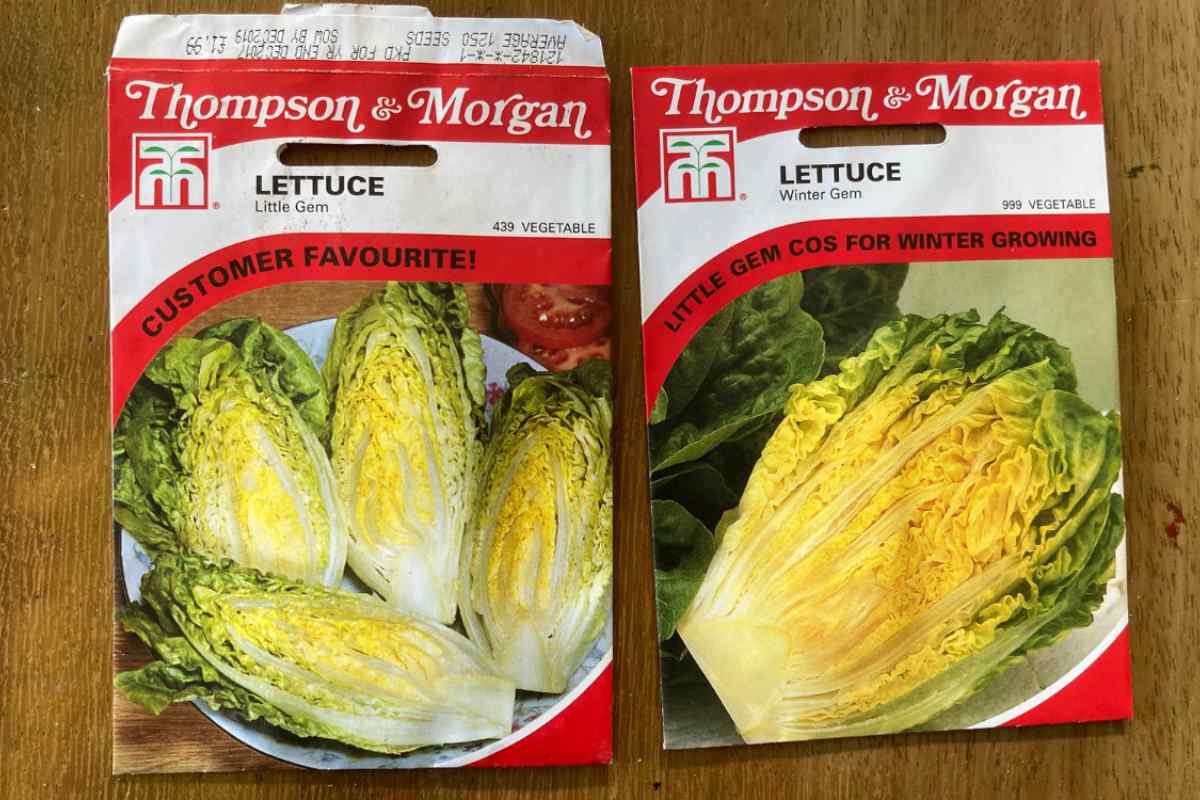What are the learning goals?
When you work together on ordering seeds with kids, the children can use their imagination. They can recognise vegetables and fruits from the catalogue and exercise some choice and opinion in planning the garden to come.
This is a fun and laid back activity but if you want to bring in some learning you can try to focus on the following things:
Get prepared
Draw a basic picture of the garden layout. It doesn't need to be fancy. Here are some examples, of a large allotment type garden, and of three raised beds in a back garden.

Including some maths in the plans
If you have older children to work with, you can get them involved using squared paper, or plain paper and a ruler, a tape measure and calculator. That way they can really draw it to scale and they can practice their maths skills.
They can measure the actual size of the beds outside and then use the calculator to divide them by 50 or 100 to fit it into a sheet. This can be a really tricky and interesting maths problem for older siblings.

Getting the children involved in planning
Once you have your basic layout you can start to write a list of what things you would like to grow.
Ask the children which things they definitely want to grow. You can take it in turns to each pick a favourite. Write them in a list and keep adding until you have thought of all of your favourites.
Ask children to use their memory to think of all the things you have grown before and decide if you want to grow them again
Then get out any existing seed packets that you already have. See if you have forgotten anything that you grew! Don't forget any seeds you have saved.

Get children looking through catalogues
One of the best things about ordering seeds with kids is that you all get to look through catalogues and fantasise a bit about the possibilities.
You can order physical catalogues through the post, or use the online ones. It is nice to have at least one paper catalogue for children to leaf through. Try to find catalogues with weird and unusual vegetables too!
Look at all the exciting vegetables and fruits you could grow.
Children can name the vegetables they see, talk about the colours and shapes, and see if they can find and recognise the names in the texts.
Add some more ideas to your list.
Children with emergent writing skills can try to copy the names of vegetables from the catalogue onto the list.

Now make your decisions!
Discuss with the children how many things you can fit into the space you have.
Help them to work out whether it is better to have small amounts of lots of different things, or fewer things but bigger yields. There is no right or wrong answer.
Go outside and look at the actual space you have. Get children to picture the vegetables they have chosen on the actual ground. Maybe they have tried to fit too many things in? Maybe there is more room than they remembered.
Seasonal successional planting
Once you have crossed some things off your list, think about all year round planting. Are you going to mostly plant things in the main growing season? Or are you going to try to keep sowing things all year so you have food to eat all year round? Don't forget that this means remembering to plant things all through summer. So you will need to check your summer plans to see if this will be possible in practice.
If you are going to try to plant all year round, then make sure you have both summer and winter varieties of things. For example there are autumn and winter cauliflowers, there are winter and spring cabbages. There are even winter hardy versions of salads like the lettuces in the pictures below.
Have a look in your catalogues to see what you can find to extend your growing season.

Get children counting - do an audit!
Now you have your wish list, ask children to look at the seeds you already have. You need to check the dates on the packets to check they are still in date, children can help to read the numbers if they are starting to read numbers.
Children can check how many seeds you have in your packets.
If a packet feels full, you don't need to check.
But if it doesn't feel full, they can pour them carefully onto a saucer and see how many there are. They can use their emergent counting skills to count larger skills or put them into groups or sets of 5 or 10 seeds. Smaller seeds they can use estimating skills to guess how many they think there are.
Work out whether you have enough seeds for some vegetables. You can cross them off your list.
Then once you have your list of seeds you still need to order, the children can help you choose which ones to order.

Planning and ordering seeds with your kids is a great way to get children to imagine, plan, count, and analyse. The more input they have into the planning of the garden, the more it will feel like their garden.
Here is a brilliant video by Grow Veg which is useful for you as an adult planner. It explains how how seeds are categorised in catalogues and what some of the sales terms mean to help you to choose a variety.
